Cedar cones are a good addition to the forager's pantry. Read on and I'll explain which ones to use, and how to cook with them.
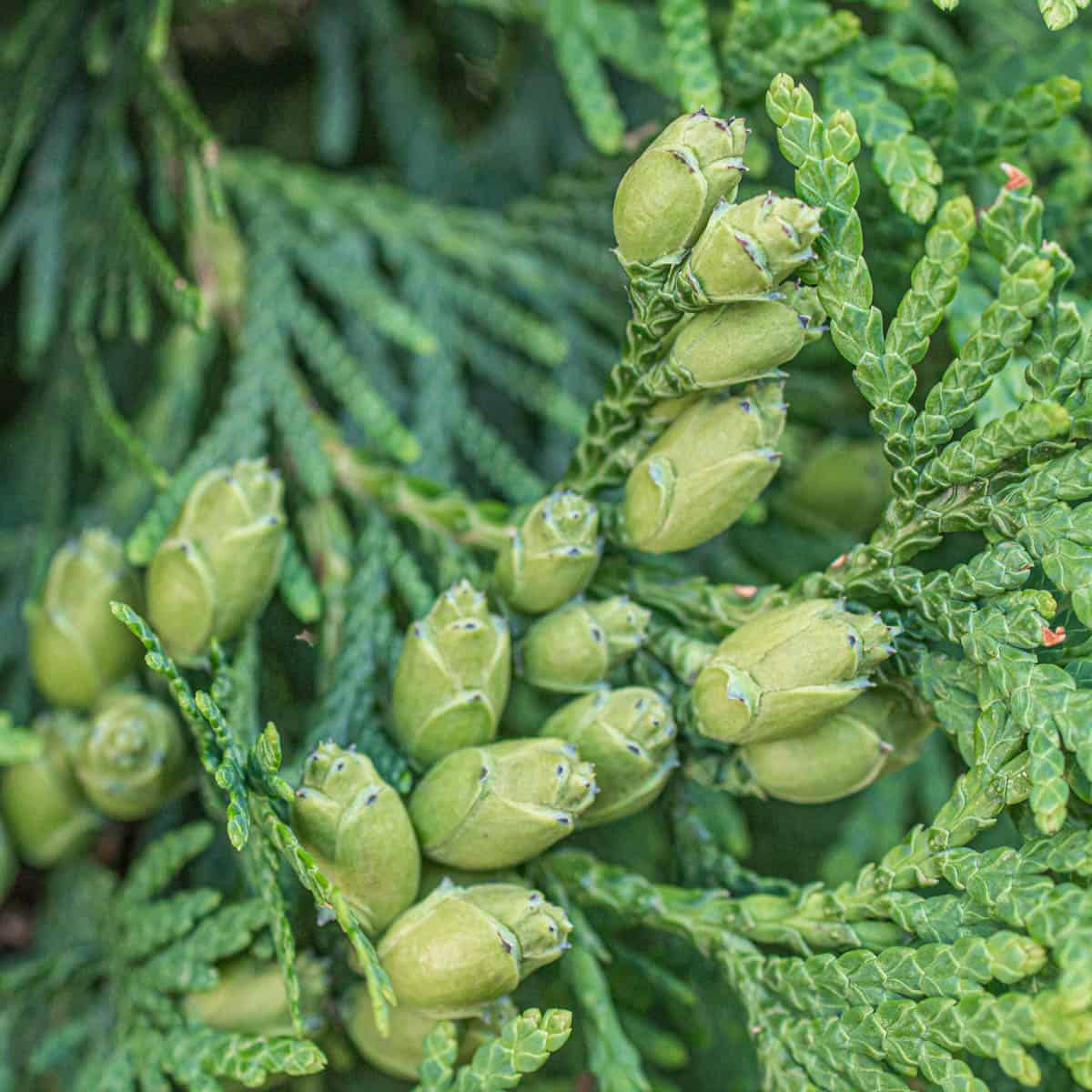
A few years ago I got the juniper bug. I remember biking with my dad in the Summer and being amazed at how many conifers I saw with heavy loads of fruit. Every time I stopped to try one of the "wild juniper" berries from the trees though It wasn't fun, they tasted like juniper, but intensely bitter and tannic on the back end.
I tried going to different trees in different places, every time it was the same, bitter, bitter, bitter. Taking into account how easily you can order conventional juniper for cooking, I stopped tasting every little blue (or green) berry I saw. I dedicated more of my precious foraging time to mushrooms, and stuck with the blue berries in the spice shaker I was used to.
Eventually I found a wild juniper that wasn't bitter, it was great tasting but it came with a blood price. The needles of the small shrubs with good tasting berries turned my hands to hamburger, a hard price to swallow when I thought they tasted near-indistinguishable from conventional juniper.
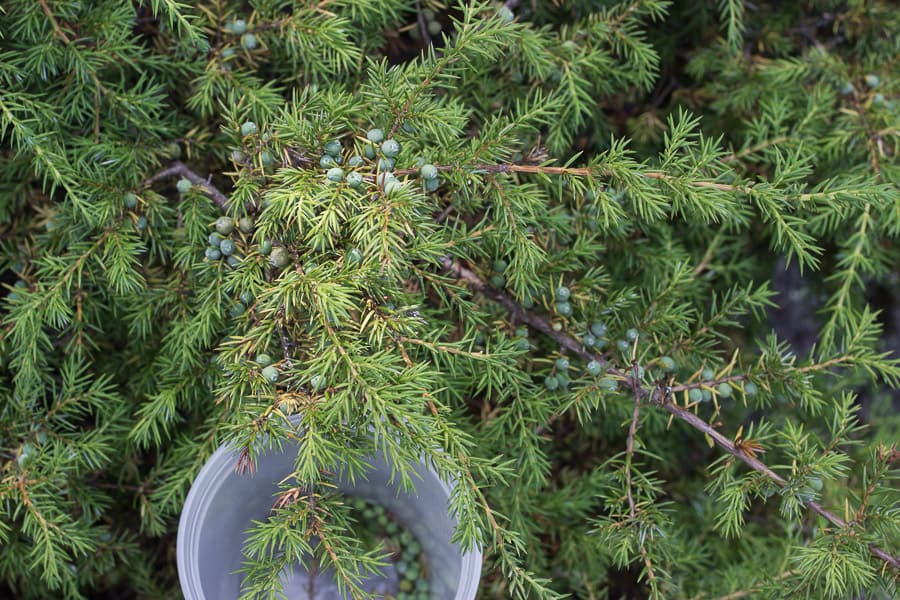
Fast forward a few years, and I'm walking around a party at a farm in the early summer, I went past a cedar tree while I was picking black walnuts and noticed small little berry-like things growing on the branches. I tasted one, it had a flavor like juniper, but there was no bitterness, and the leaves were soft in comparison to the anti-personnel non-bitter juniper.
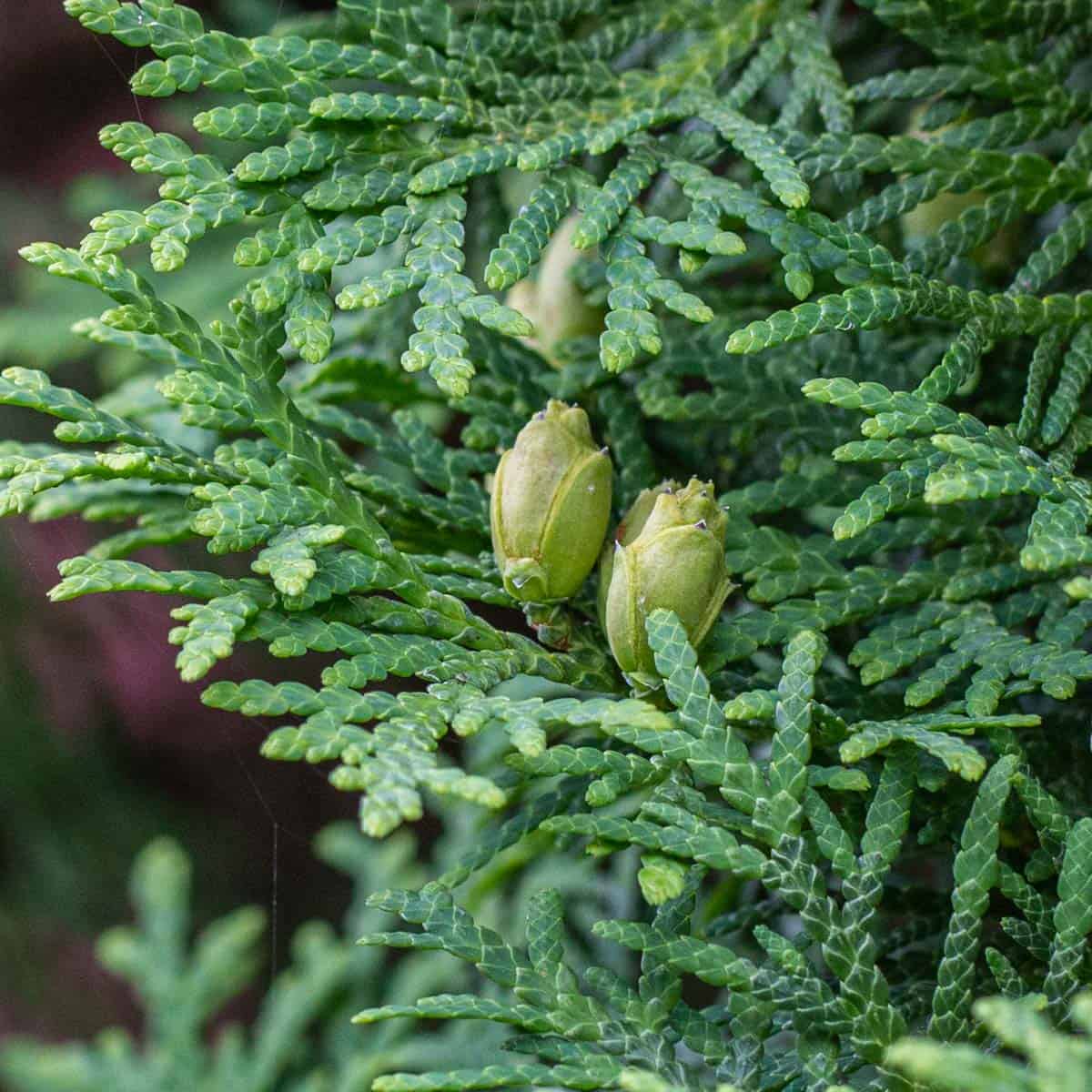
Could it be the best of both worlds? Since they were a conifer I knew they should have similar properties to juniper. I forgot about the walnuts for a bit and picked a few cups of the little green things to bring home.
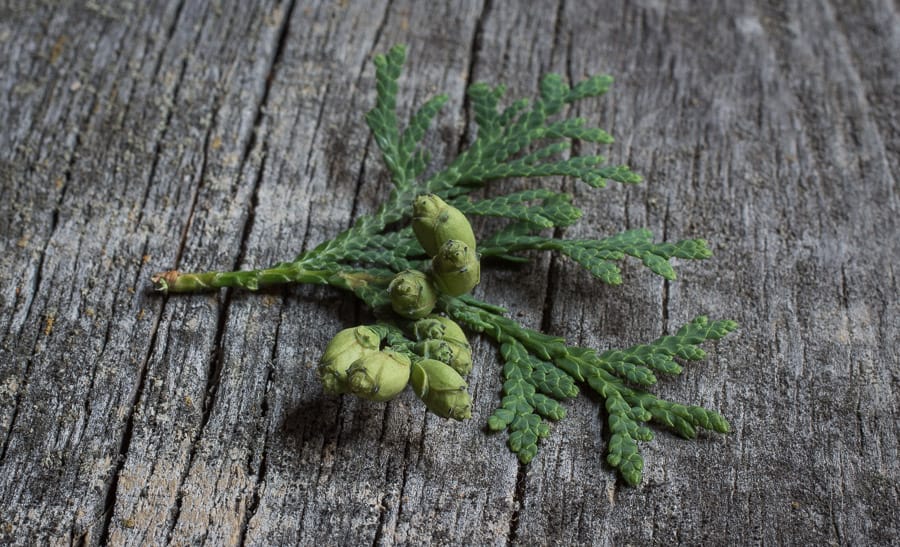
I took some time to research them and figure out exactly what they were, some armchair browsing told me they were white cedar cones, a species in the genus Thuja, and a close cousin to the juniper trees with the bitter (and non-bitter) berries I'd been eating before.
On another note, being a big fan of the absinthe my friend from Czechoslovakia would bring me from overseas in college, I also thought that the Thuja name might be a cognate or relative of thujone, the supposedly psychoactive compound in the green fairy (it is).
However, everything I can find on the subject seems to contradict any sort of trippy possibilities associated with thujone, so I put aside the thought of making cedar absinthe since there's probably more responsible pursuits to experiment with.
A mild, fresh substitute for juniper
The little cones are good, and best used fresh in my opinion. They keep some of the flavor dried, but it's not as electric as the fresh product. They pack a non-bitter juniper flavor, slightly more mellow than it's cousin from the spice rack.
In fact, I thought that it was mellow enough to chop into pieces and put on dishes raw, or even one or two halved, for a punchy gin kick. Now I'm not going to be sprinkling the things all over a dish, but in the right place and in small amounts they can be fun.
Ideas for harnessing the aroma
- Cooking with cedar cones doesn't necessarily mean you need to ingest them. I made a great dish of elk roast where I pureed the fresh cones with a little onion, oil and salt, and used it as a marinade for 24 hours, wiping it off before roasting.
- You could also likely chop them up and ferment them in cream, and then discard the solids, to make a flavored creme fraiche, I've had great results with this using other plants.
- The flavor is water soluble too, but I don't generally make tea. Brines and alcohols would taste great with these, my ham cured with pine needles, for example.
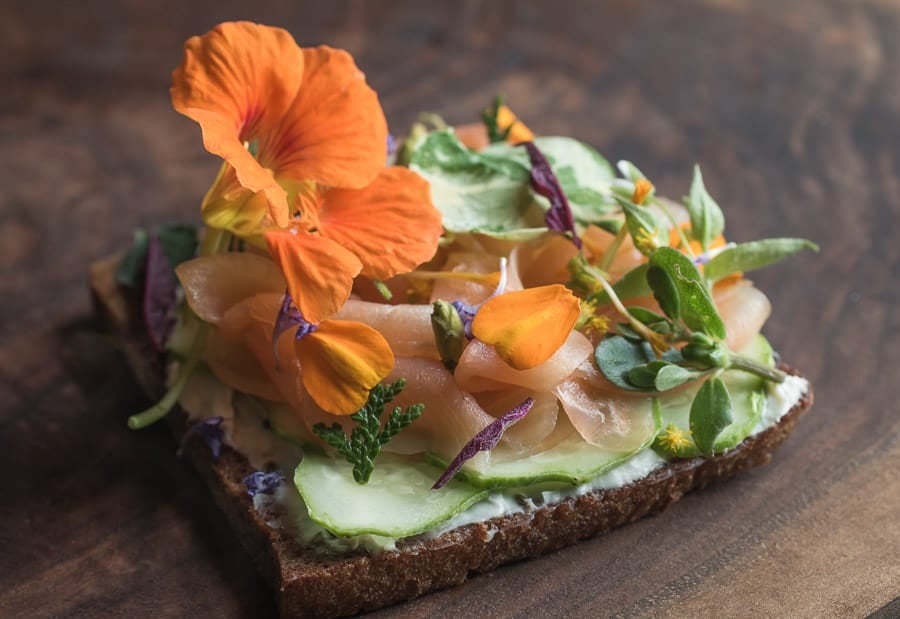
Fermenting Experiments
At home I did some experimenting to see how soluble the juniper/cedar flavor would be in a brine medium, thikning maybe I could use them like I would capers. Another hope with brine was that I could preserve the texture of them fresh, or soften them a bit through processing.
I brined some hot, and then brined a few cold and allowed them to lacto-ferment for a week or so. The experiments were a good effort, but in the end I didn't like how they tasted. Next time I'll probably just hot-pickle them, since pure or overly-salty brine naturally has a way of drying things out and can toughen the skins of things.
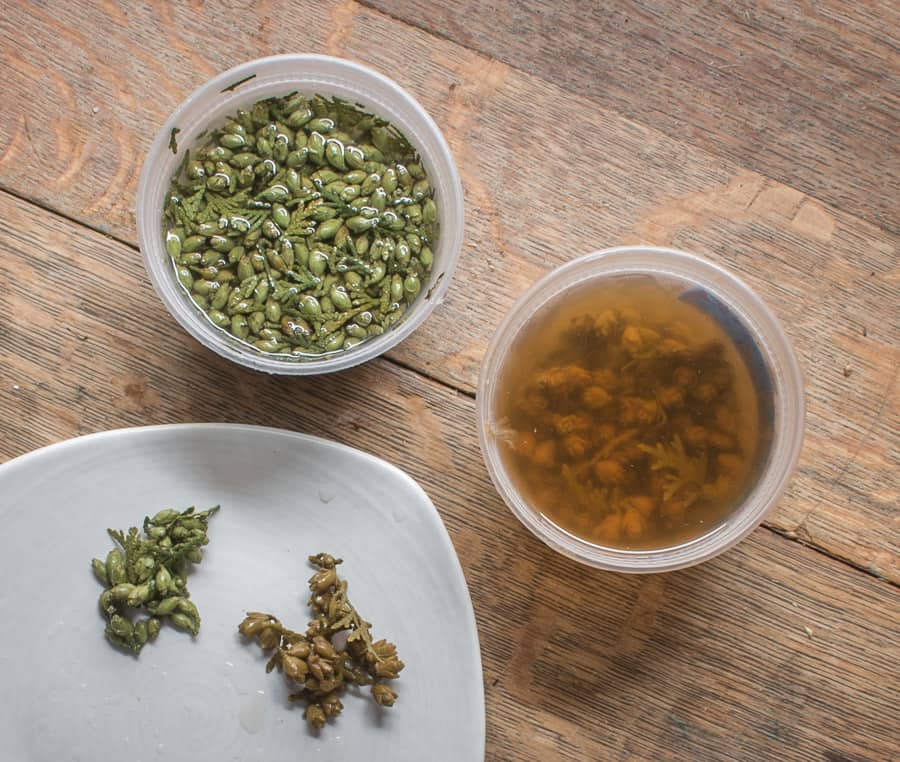
I thought they were too chewy, and I preferred the citrusy taste of them fresh to the other methods. There's probably lots of things other people can figure out to do with them on the preservation front. On another note, Sean Sherman's new book has a nice braised bison recipe that uses the branches.
Have you cooked with cedar branches or cedar cones? I'd love to hear about it.
More cooking with Conifers
If you like cooking with conifer products, make sure to check out the following posts too:

chess
We have a huge incense cedar on our property LOADED with cones. Harvested a bit as well as the leaves. Going to make some tea (out of the leaves) for the first time! Still deciding what to do with the cones...they smell amazing!
Also, we have Mugolio (the recipe from your site) going in a couple jars. We can't wait to try it!
jennifer
Eastern red cedar berries, ripe, deep blue and falling off the tree are absolutely magical. I hope you find some one day. They have an initial sweetness and finish peppery. Incredible spice. I ground some and use some as whole berries. I love them simply as a ground sprinkle over roasted cauliflower, and they are great in marinade for meats.
Alan Bergo
Agreed they have a good flavor but they're quite astringent. Have to be careful with how many you add.
K.A.I.
Fascinating and informative, thank you. I have a fence of “swamp” cedars on the property. They have had good care for 8 years. I am not sure the formal genus name. They have produced bountiful small green cones. I have processed 2 quart jars, first with equal br. Sugar and green cedar cones (in the window sill sun), mixing daily. At the 4 day point and the taste is spectacular and delicately subtle. I haven’t tasted such before. Debating how long to leave in the sun and what next steps. Suggestions are welcome.
The forage into my backyard is amazing. If adventuring out, it’s bringing awareness of what’s about that’s familiar, and what is....this?
Alan Bergo
K, It sounds like you were following a recipe mixing the cones with sugar. You will want to take a look at mugolio.
Cyn
Are western red cedar buds while green okay for Mugolio? I hear so many contrasting comments about toxicity. I currently have the following fermenting green cones:
-western red cedar
-Japanese cedar (sugi)
- Lawson cypress or sawara cypress (getting mixed IDs)
- eastern red cedar
- deodar cedar
Any of these considered dangerous/toxic in Mugolio?
Alan Bergo
They should be fine, but people will complain if I don't mention that cedars are an abortifacient.
Sinclair
Thanks for your response.
I’d heard port orford cedar could make you sick, but I’m not sure at what amount and under which circumstances.
For the record, the giant sequoia continues to smell earthy and unappetizing. It’s very dry, so maybe in a month, it will turn into something better. I just opened the jar or macerating eastern red cedar and it smelled…not great. Kind of medicinal, like a doc office. Hmm…
Best smelling so far would be Japanese cedar, Doug fir, deodar cedar, and scots pine (tho I opened scots last night and it was so fermented, the initial sniff nearly burned my nose off. Hope that’s normal)!
Alan Bergo
It is normal in that every species will be a little different, but cones from the same genus will share similar aromas. Have fun experimenting.
Robin
We are fermenting some in our own homemade OACV. We are also going to try a few fermented in Honey, the same way you ferment Spruce Buds in Honey. Cedar has such great medicinal value!
Alan Bergo
Fermenting the cones in honey will work just fine. I also treat them with sugar just like the spruce tip syrup and mugolio.
Jacqui
OK ... so what about cedar cone varenye? Today I found Thuja orientalis (with spiky fruits) that taste ... interesting and pleasant enough. With the attempt do you think?
Bethany
I've enjoyed cedar tea for a while (surprisingly tart, with some of that resinous thing going on with spruce too) and today I'm experimenting with infusing the flavor into creme pat to fill creme puffs. The flavor turned out pretty subtle, so I'm going to try infusing some into caramel for the top as well--we'll see how it goes.
Mike
When I was a kid (a long time ago...), we would cook our freshly caught trout at the streams edge over a little campfire. The best ones were always when we happened to be near cedar trees. We would stuff a handful of cedar boughs into the fire for the last few minutes. It imparted a lovely finish to the trout. They tasted like the mountains.
Carla Beaudet
I've had good success making mugolio with mugo pine buds. I read about the syrup, experienced sticker shock when I went to buy some, then realized I had planted ornamental mugo pines in the landscaping proximal to my house. In the end I bought some anyway to compare with my own. Mine is better. I bet your cedar cones would make a fine syrup. Mix them 50% by volume with sugar, let it sit all Summer in the sun, then remove anything nasty in the top layer, add an equal volume of water, boil, and strain.
Alan Bergo
Oh now that's a great Idea! Thanks for the reminder Carla.
Melanie
I mixed western red cedar cones and brown sugar (50/50) and let it sit several months. The flavor is great. Unfortunately, I have an allergic type reaction when I handle the cones, so probably won't do it again. A small amount of the 'molasses' doesn't seem to trigger a reaction. Also read that thujone found in western red cedar can be poisonous.
Robin
We made syrup like this last Summer. I picked the green cedar buds from trees on my property; layered them with brown sugar in big gallon jars and put them out in the Summer Sun to melt the sugar and do it's fermenting. THe result after some time and straining, was a few quarts of cedar syrup that tastes delicious. My question here... Since, i assume this syrup holds much medicinal value, how much would you consume at a time? I have just used little bits and love it, but wondering what more experienced folks think? Is it okay to slather it over pancakes? 🙂
Alan Bergo
Hi Robin. I've used it on pancakes, baked goods and desserts for years now, from a few different cedars. A tablespoon or two per person is fine.
MJ
Maybe in a Kombucha recipe? How would this do with blackberries?
Maddy
Where are you now?